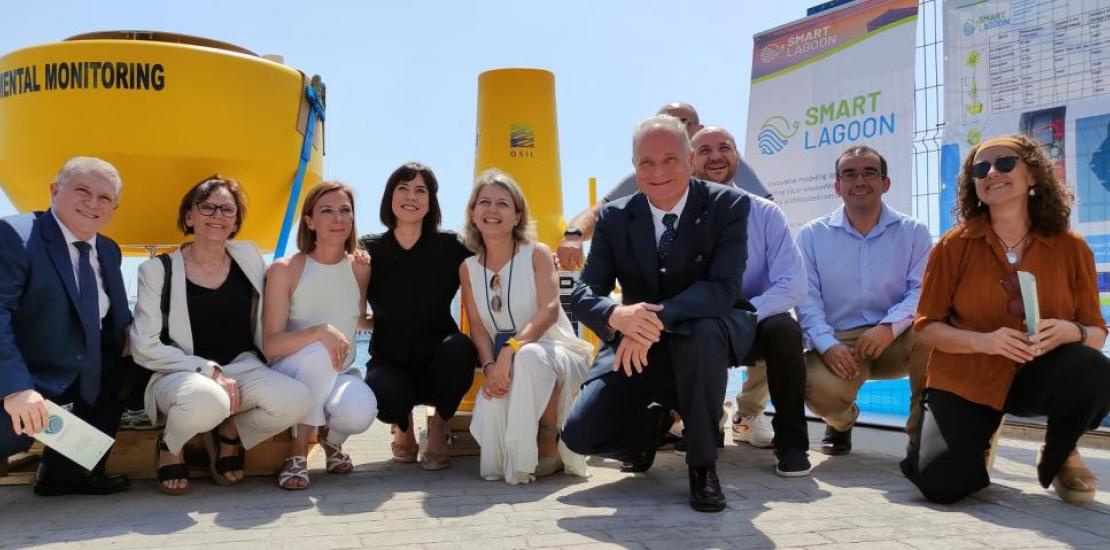UCAM launches the first buoy to measure the state of the Mar Menor in real time
Estrella Núñez, vice-rector of Research for the Universidad Católica, has participated in the visit of Diana Morant, Minister of Science and Innovation, to the Spanish Institute of Oceanography, where the Minister was shown the progress of the European project 'Smartlagoon' led by the Universidad Católica de Murcia.
The smart buoy that will collect all the necessary data from the Mar Menor, such as oxygen levels, temperature, salinity, chlorophyll and turbidity at different depths, to create its digital twin, has been presented to Diana Morant, Minister of Science and Innovation, during her visit to the Spanish Institute of Oceanography (San Pedro del Pinatar). This was done by the UCAM Vice-Rector of Research, Estrella Núñez, and some of the researchers of the 'Smartlagoon' project financed with funds from the European Commission's Horizon 2020 programme.
This project, led by the Universidad Católica de Murcia, which has attracted nearly 4 million euros to the Region of Murcia, will create a digital twin, using artificial intelligence. Said twin will replicate the physical, chemical and biological changes that occur in the salt-water lagoon in response to the different events that affect the Mar Menor, both meteorological and those in which human intervention is involved, forecasting changes in the short and long term. This 'Digital Twin' will be of great help for subsequent decision-making by the relevant administrations.
The Smarlagoon project, led by UCAM researcher Javier Senent, involves eight partners, in addition to UCAM: WaterITech ApS (Denmark), Uppsala University (Sweden), Norwegian Institute for Water Research (Norway), Università di Bologna (Italy), Photrack AG (Switzerland), Universidad Politécnica de Valencia and Vielca Ingenieros S.A. (Spain).
Estrella Núñez stressed that this project, valued at 3,972,000 euros, "will allow us to put our knowledge at the service of the Region's problems, generate opportunities for our researchers to continue to use their work to improve the quality of life of all citizens, contribute to the development of our autonomous community, promote collaboration between public and private institutions, and help in the regeneration of the Mar Menor".
Meanwhile, Minister Morant stated that these buoys that "have been designed and are going to be deployed, will monitor and sample what is happening in the Mar Menor in real time, and will serve to establish prediction, study and analysis models in which technology will be incorporated, so that science can tell us exactly what the sources that are causing the problems are, and guide public policies and decision-making". In this respect, she expressed her appreciation to the scientists and universities involved.




